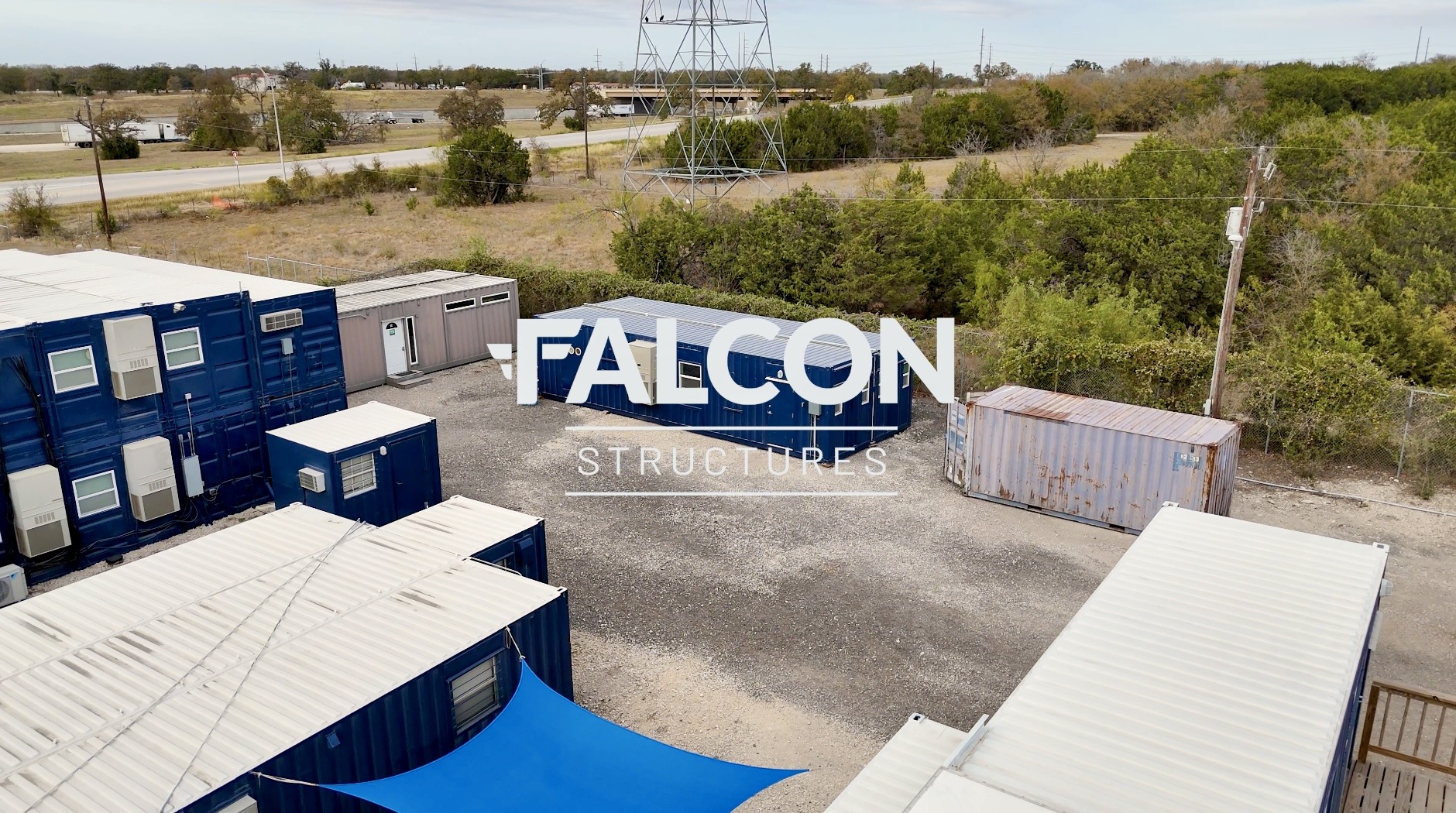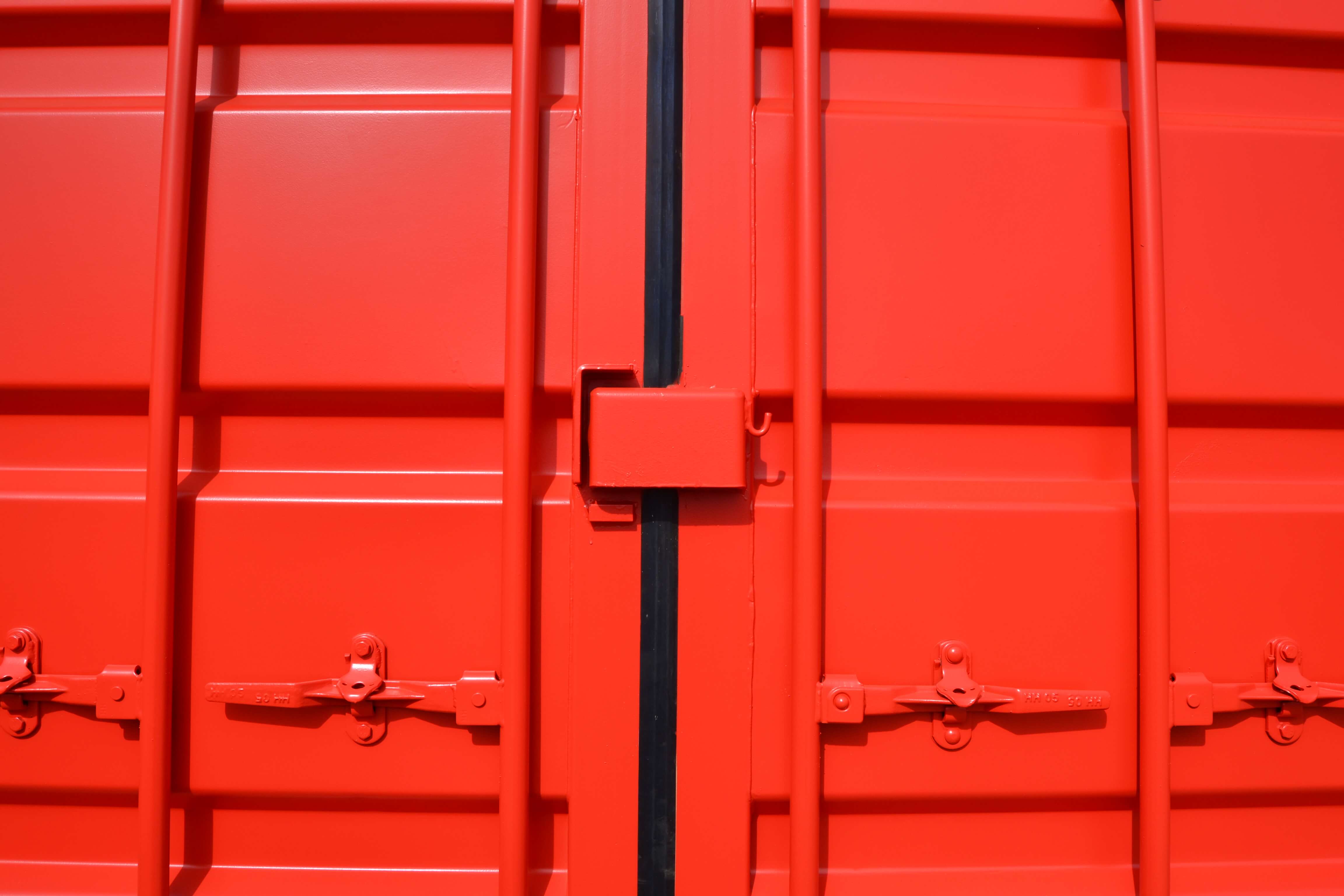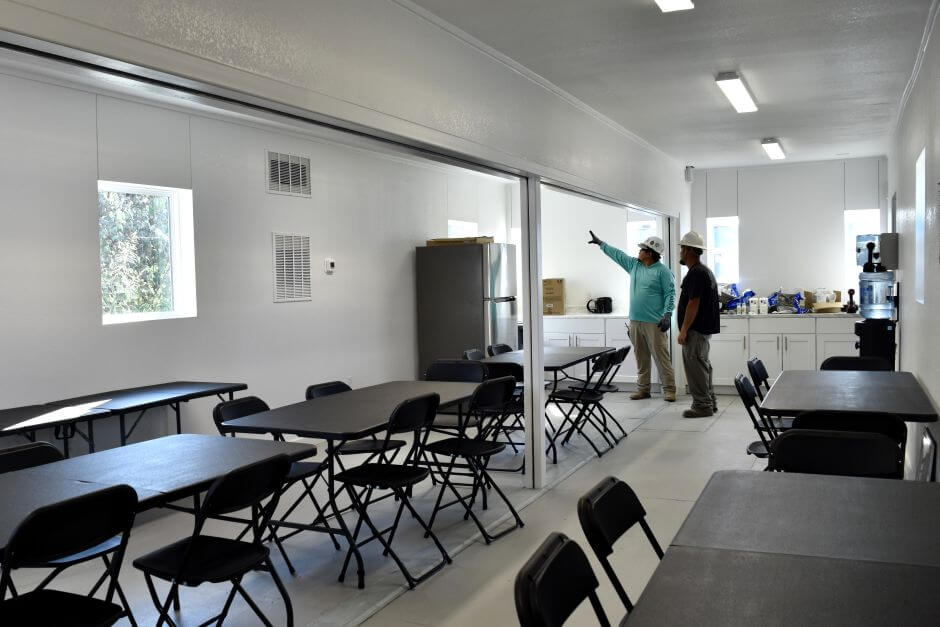Protecting Field Workers with Climate-Resilient Container Structures
 Becca Hubert | Jun 4, 2025
Becca Hubert | Jun 4, 2025

Severe weather events like flooding, wildfires, and tornadoes are becoming more frequent and disruptive across job sites nationwide.
Aside from seeing these weather events in the news and experiencing a few ourselves (hello, record heat in Texas), more and more customers are coming to Falcon Structures for solutions that will protect essential workers and maintain business continuity—even when the elements won’t cooperate.
Here’s why climate-resilient container-based structures are becoming more critical than ever:
Heatwaves & Temperature Extremes
Rising heat puts field workers at risk of heat exhaustion, dehydration, and even fatal heat stroke. Outdoor workers in the U.S. are 35 times more likely to die of heat-related illness than the average American.
OSHA’s recent guidance around heat safety makes it clear: employers need to get ahead of heat exposure in the workplace.
We recently addressed this on our own job site by upgrading a small breakroom into a double-wide, climate-controlled container break space to give production workers a cool place to rest, hydrate, and recover from triple-digit temperatures.
With summer and extreme heat on the horizon, we upgraded our team’s break space to be more spacious with extra-powerful air conditioning.
On the other end of the thermometer, sudden cold snaps or prolonged freezes require shelter that can retain warmth, reduce exposure risks, and help workers maintain productivity.
Storms, Flooding & Tornadoes
Many members of our team recall the unprecedented March 2022 tornado outbreak in north and central Texas, where 17 tornadoes were recorded within a five-hour period. And just like anyone who lives within a few hours of the Gulf Coast, we know well that the end of summer is synonymous with hurricane season.
Common field workspaces like temporary trailers are rarely sealed, anchored, or rated for the wind and water that roll through during weather events like these. Compared to traditional temporary buildings, containers can be anchored to permanent foundations and reinforced to better handle what nature throws at them.
Wildfires & Air Quality
As drier conditions push wildfires into more populated areas, the interest in non-combustible materials, filtered air systems, and safe egress planning is growing fast. Consider the devastating California wildfires of 2025. We’re already working with several customers on the West coast to rebuild climate-resilient field housing and workspaces for public workers in fire-affected zones.

Fire-resistant but not fireproof, containers are a common training material for first responders.
Containers, while not fireproof, are able to withstand live flames thanks to their Corten steel exterior. That’s why they’re popular materials for fire training, and therefore less combustible than wood-based building materials.
Downtime, Retention & Reputation: The Business Impact
Extreme weather events like these don’t just disrupt operations. They disrupt people, too.
Delays, equipment damage, and crew displacement cost money. But exposing workers to dangerous conditions, especially without safe shelter, can cost companies far more in retention, reputation, and even insurance or legal fees.
Today’s workers are less willing to accept poor conditions, especially when the job itself is already physically demanding. Offering safe, climate-resilient spaces is becoming a differentiator for companies that want to keep skilled labor and avoid costly turnover.
“These container offices have given our team a comfortable, sturdy space to administer our projects, coordinate operations, and even provide a cool spot for field crews in the desert heat.” – Read the Jordan Foster Construction case study
How Modified Containers Help Weather the Extremes
Shipping containers are naturally durable, portable, and secure. But what makes them especially effective in volatile climates is how they can be modified.
- Wind & storm resistant when anchored properly
- High R-value insulation, like several inches of spray foam on all six sides, for extreme heat or cold
- Customizable climate control with optional supplemental ventilation
- Water-resistant materials & elevated floors for flood-prone areas
- Mobile and quickly deployable ahead of weather events, or to follow crews from site to site
- Sustainable and energy efficient with solar power, reflective roofing, and hybrid power systems that reduce strain on power grids
Protect Your People (...and your stuff, too)
Climate-resilient container structures are an investment in worker safety, business continuity, and long-term resilience. Companies that adapt now won’t just weather whatever wild storms await—they’ll come out stronger, safer, and better prepared for the future.
Ready to learn more about protecting field workers and their well-being? Access our free guide for insights and best practices: Retention, Morale & Success: The Business Case for Employee Advocacy
SUBSCRIBE
- Shipping Container Modifications
- How-Tos
- Workspace
- Commercial Construction
- Multi-Container Buildings
- Storage Solutions
- Industrial Enclosures
- Bathrooms & Locker Rooms
- Oil & Gas
- Climate Control
- Green Building
- Living Space
- Industry Insight
- Military & Training Facilities
- Water Treatment Solutions
- Energy
THINK INSIDE THE BOX®
WITH OUR BLOG
Get everything from shipping container basics, to detailed how-tos and industry news in our weekly blog. Stay inspired and subscribe!
RELATED BLOGS

Building Better Workplaces: Behind Falcon's New Container Breakroom
Becca Hubert | Feb 5, 2025 | 4 min read
READ MORE

How to Secure a Shipping Container: Peace of Mind with Container Lock Systems
Marissa Morin | Apr 6, 2022 | 3 min read
READ MORE

The Employer Brand You Can Walk Through
Becca Hubert | Oct 1, 2025 | 3 min read
READ MORE